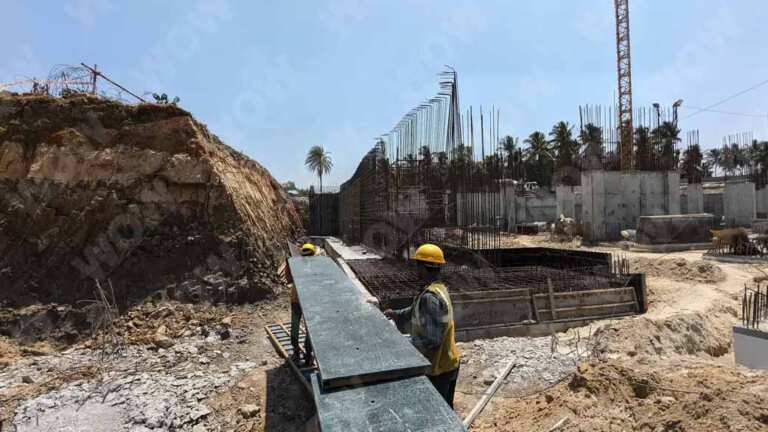Introduction: Shaping the Future of Construction Materials
Imagine a construction site free from splintered wood, warped panels, or the relentless replacement of shuttering boards. This vision of seamless, efficient, and sustainable construction is no longer a dream but a reality brought forth by the evolution of concrete shuttering materials. The industry has witnessed a transformation From traditional dependence on timber to innovative solutions like recycled plastic sheets. This shift isn’t just about adopting new materials; it’s about rethinking how we build with efficiency, cost-effectiveness, and environmental consciousness.
This blog explores the journey of shuttering materials, focusing on how recycled plastic boards are reshaping the future of construction, offering once unimaginable advantages.
The Foundations of Shuttering: Why It Matters in Construction
Shuttering forms the backbone of any concrete structure, creating temporary moulds that hold the material in place until it sets. Wood and plywood were traditionally the go-to materials due to their availability and workability. However, these materials come with significant limitations: they warp under prolonged exposure to moisture, offer limited reuse cycles, and contribute to deforestation.
As construction demands grew, so did the need for shuttering materials that could withstand the rigours of modern projects while reducing environmental impact.
The Rise and Fall of Traditional Materials
Wood and Plywood
Wooden shuttering boards have been in use for centuries. While they offer easy customisation and are cost-effective initially, their drawbacks are significant:
Limited Durability: Moisture exposure leads to warping and delamination.
Wastefulness: Most wooden boards can only endure 10-12 repetitions before being discarded.
Environmental Impact: The deforestation associated with producing wooden shuttering boards is unsustainable.
Metal Shuttering
Steel and aluminium shuttering gained popularity as durable alternatives. These materials offered precision and strength but came with their challenges:
High Initial Cost: The upfront investment in metal shuttering is substantial.
Labour-Intensive Handling: Their weight makes them difficult to transport and assemble.
Corrosion Issues: In humid conditions, maintenance becomes an additional expense.
The Plastic Revolution: A Sustainable Alternative
The advent of plastic concrete shuttering marked a turning point in construction materials. Designed to address the limitations of wood and metal, plastic boards offer an ideal balance of performance, cost, and sustainability.
Key Features of Recycled Plastic Shuttering Sheets
Durability: Resistant to moisture, corrosion, and physical wear, plastic shuttering sheets maintain structural integrity over extended periods.
Reusability: Unlike plywood, which lasts for 10-12 cycles, plastic boards can endure over 50 repetitions, significantly reducing costs over time.
Lightweight and Easy to Handle: Plastic boards are easier to transport and install compared to metal alternatives.
Eco-Friendly: Made from recycled plastic waste, these boards divert materials from landfills and oceans, promoting a circular economy.
Cost Comparison: Breaking Down the Economics
While the plastic shuttering price might appear higher than plywood initially, the cost savings over time are undeniable:
Initial Investment: Plastic boards are 30-40% costlier than plywood but last 5-6 times longer.
Maintenance: Unlike metal boards, plastic sheets do not require anti-corrosion treatments.
End-of-Life Value: Recycled plastic boards can be reprocessed, ensuring zero waste.
By using plastic shuttering sheets, contractors can significantly save labour and material replacement costs.
Practical Applications and Case Studies
Real-World Examples of Recycled Plastic in Construction
Slab Shuttering: Recycled plastic boards maintain their form even after months of exposure to moisture and pressure.
Columns and Beams: Their lightweight nature simplifies vertical installations without compromising strength.
Retaining Walls: The sheets withstand heavy loads, making them ideal for infrastructure projects.
In Bangalore, for example, construction projects using recycled plastic shuttering boards have reported faster de-shuttering cycles and lower material wastage, demonstrating the practical benefits of this technology.
Environmental Impact: A Step Towards Carbon Neutrality
Every recycled plastic sheet produced helps prevent hundreds of kilograms of CO2 emissions. The industry reduces its carbon footprint by repurposing waste plastic into high-performance construction materials while addressing the global plastic pollution crisis.
The Circular Economy Advantage
Plastic boards can be reprocessed endlessly, unlike plywood, which ends up in landfills after use. This ensures that every sheet contributes to a sustainable construction ecosystem.
Best Practices for Using Plastic Shuttering Sheets
Choose the Right Thickness: Based on load and application, select the appropriate thickness (e.g., 8mm, 12mm, or 16mm).
Ensure Proper Runner Spacing: Follow the technical recommendations for optimal support.
Clean and Store Properly: To extend their lifespan, rinse boards after use and store them away from direct sunlight.
Conclusion: Building a Better Future with Recycled Plastic
The shift from wood to recycled plastic boards in shuttering represents more than just material innovation; it signifies a commitment to building smarter, greener, and more efficient structures. These boards are not just an alternative—they are the future of sustainable construction.
As we continue to innovate, plastic concrete shuttering proves that eco-friendly solutions can outperform traditional materials in durability, cost-effectiveness, and environmental impact. It’s time to embrace this evolution and pave the way for a construction industry that builds without boundaries or burdens on the planet.

